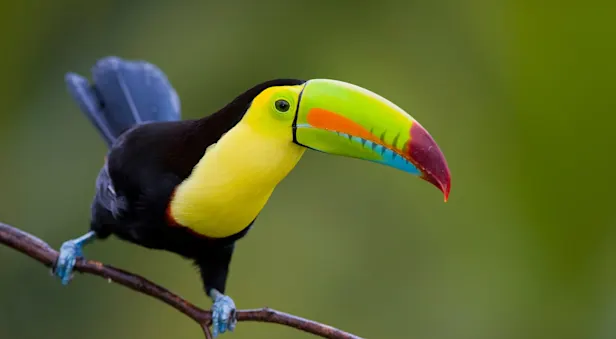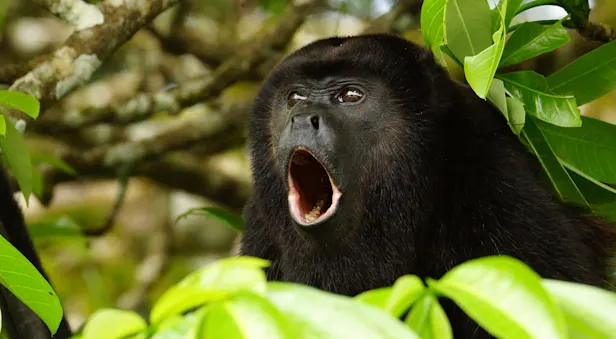
Know Before You Go


Jaguar Facts | Costa Rica Wildlife Guide
The jaguar (Panthera onca) is the icon of the Central American rainforest. Past cultures have revered it as a Mesoamerican god. Once found throughout jungles, lowland savannahs and coastal mangroves, the jaguar rarely makes appearances today.
The majority of Central American jaguars are a rich, golden color with black rosettes that spot their coats. There are a few entirely black jaguars, also called black panthers, that possess a surplus of melanin. The melanin causes the dark pigment.
The majestic jaguar is the largest and most powerful of South and Central American cats. An adult male jaguar is more than 7 feet long, stands 2 feet at the shoulders, and weighs up to 200 pounds. The animal’s head and shoulders are colossal, while its legs are relatively stout. These creatures are adept hunters, swimmers and climbers. They are comfortable in an array of habitats. They also enjoy lounging by riverbanks, lazily sunning themselves with one large paw hanging in the water, awaiting the tasty morsel of a passing turtle or fish. They prey upon a wide variety of land, water and tree-dwelling animals and are capable of biting through a crocodile’s skull. They sometimes ambush their unsuspecting prey by leaping out of trees, making a kill with one, powerful bite.
Though you may come across the footprints of a jaguar while trekking through a mangrove or forest, it is unlikely you will see the solitary cat. Jaguars are extremely elusive and very rarely attack humans.
Even though jaguars are a protected species, poachers still hunt them for their valuable coats, which are sold illegally. The biggest threat to what is left of the jaguar population is habitat loss. Deforestation causes clashes with ranchers, who sometimes kill the displaced cats for preying upon their livestock.
Jaguars are nocturnal, spending most daylight hours snoozing in the sun. Male jaguars mark an area of about 65 square miles and spend nights stalking deer, peccaries, agoutis, tapirs, monkeys and birds. If the hunting produces poor results, jaguars will venture into rivers and scoop up fish with their large paws. Rivers are where jaguars go to hunt large tapirs when they come to drink.

































